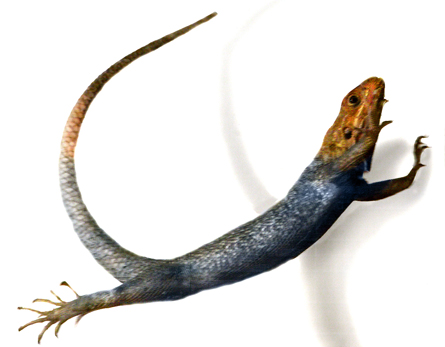- More than 2 years ago

The animators of Jurassic Park were right on in their depiction of Velociraptor aeronautics: A leaping lizard uses its tail to correct ungainly maneuvers, akin to a tightrope walker with a balancing pole.
Researchers have confirmed a 40-year-old hypothesis regarding dinosaur acrobatics by studying Agama lizards. The critters arch their tails towards their heads when leaping to prevent a nose dive, a team reports online January 4 in Nature.
The University of California, Berkeley scientists filmed lizards leaping onto rough and slippery surfaces and assessed the launchings with some clever math. The team then built a lizard-sized robot with a movable tail and, like the lizard, the robot used the same tail maneuvers to correct the angle of its body after launching so it would land safely.
Assessment of a reconstruction of a 1.5 meter-tall Velociraptor — a smaller version than that in Jurassic Park — suggests that it and other not-too-big therapod dinosaurs could have performed the same tail tricks, and may have been better aerialists than the Agama.
By recording Agama lizards leaping on to different surfaces, researchers calculated the angle of the lizards’ bodies and tails to determine how the creatures use their tails to balance themselves as they fly through the air.
Credit: courtesy of PolyPEDAL Lab, CiBER/UC Berkeley






